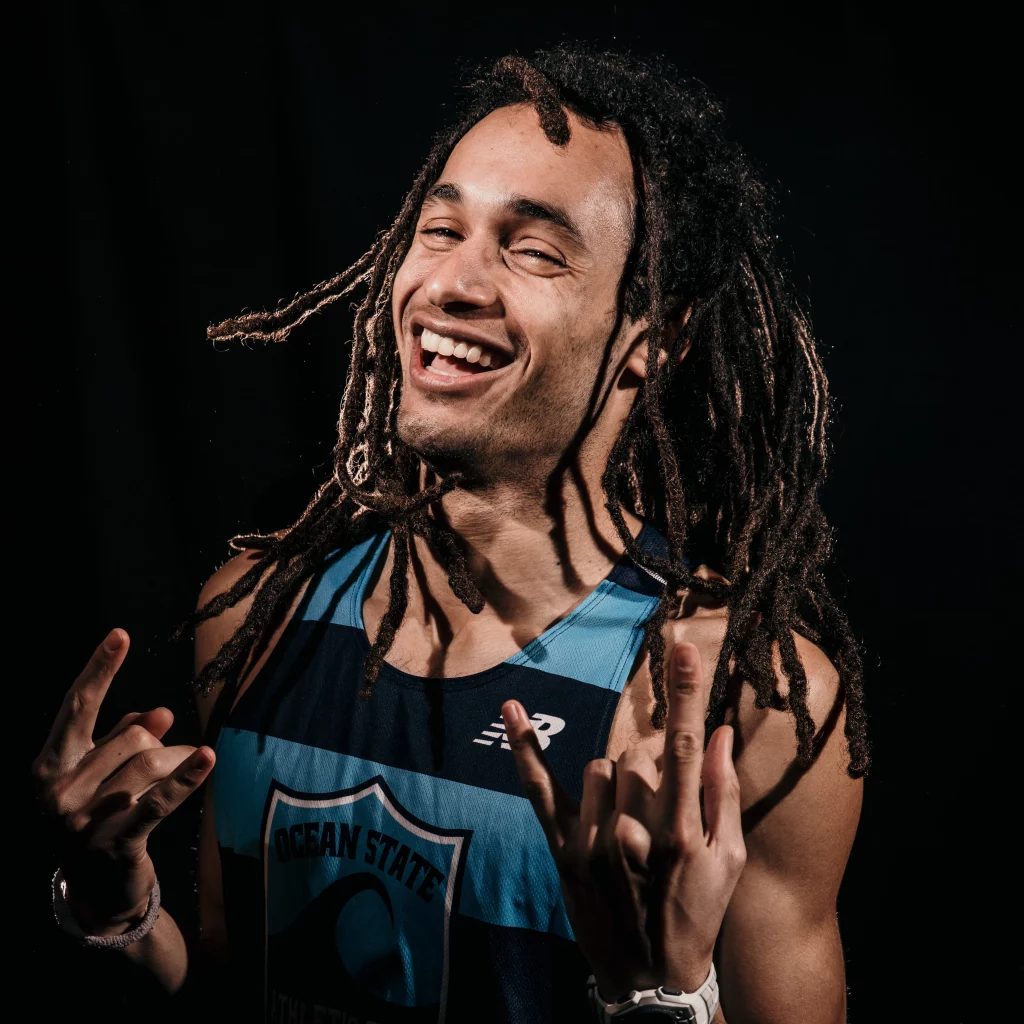Q&A with Jordan Mann: Chasing a more inclusive Hillel

When Brown RISD Hillel program associate Jordan Mann isn’t training for the Olympic Track and Field Trials, you can find him leading initiatives that seek to support, explore and celebrate Jewish students of color. Whether it’s sprinting around a track, or sitting around a table studying Torah, Mann believes in the importance of creating inclusive spaces for Jews of all backgrounds.
First things first, you run professionally for New Balance as part of the Ocean State Athletic Club and have competed in major national tournaments. You even aspire to compete at the Olympics. What does your training and competition schedule look like these days?
“It’s always funny to address Olympic aspirations because it’s the biggest name event in our sport. It’s obviously the goal that gets the most attention, but in reality, it’s such a difficult thing to accomplish. To qualify for the Olympics, you have to be top three in your event at the Olympic Trials, which are only every four years. The trials for Tokyo 2020 are about a month before the event, and while qualifying for the Olympics is still one of my goals, my main focus is to just be the best athlete I can be every day.
“I run between 90 and 100 miles most weeks. I can barely remember life before 10 and 4, which is a 10-mile run in the morning and a 4-mile run in the evening. My competition schedule through the fall is fairly low key with some local road and cross-country races. Most recently, I finished fifth at the U.S. Road 5K Championships in New York! This indoor season, I’ll run a few bigger races in Boston and New York, and by the summer, I’ll be gearing up for the U.S. Trials at the end of June.”
Before you started working at Brown, you were also a student there. What brought you to Hillel and how did Hillel play a role in your experience as both a college student and an athlete?
“My friend and upperclassman on the track team found out I was Jewish and immediately wanted me to join her at Hillel. I got increasingly involved at a time when I was in a tough place with Judaism due to some family issues. I continued to stay engaged and began to realize how much value I found in Jewish practice. I couldn’t, and am not sure I completely can yet, illustrate exactly what that value means, but does it really matter?
In an interview after you finished fifth in the men’s steeplechase at the USATF Championships, you mentioned that running is about loving what you do, a mentality you also apply to your work at Brown RISD Hillel. What makes you passionate and excited to come into work every day?
“Definitely the students. Helping them figure out what Judaism does and can mean to them is always really exciting. One student told me that she wanted to get involved in Hillel, but she didn’t know how. When I asked her about her interests, she told me about her love for comics. Now, she and Rabbi Alex Weissman, our senior Jewish educator on campus, are co-leading a text study inspired by a Spiderman comic. That’s awesome!”
An aspect of your role includes working with two student groups: Maccabears, which brings together the Jewish athlete community at Brown, and Hillelin’ with Melanin, a Hillel program that celebrates students’ intersectional identities and increases their visibility on campus. As a Hillel professional, what have you learned from being involved in these two initiatives? Why are these groups important for Brown students to have on campus?
“They are super different initiatives in a lot of ways, but professionally, there are parallels between the two because they serve groups of students who are often more reluctant to step into Jewish spaces. Whether that’s because of the latent racism Jews of Color often have to deal with in our own communities, or just because Jewish athletes tend to have insular friend groups that dwell outside Jewish life on campus, each group comprises students who are often reluctant to step into Jewish spaces. For a Jewish student who finds value in Jewish practice but gets stuck on the fringes of Judaism, it’s important to help bridge that gap.
“The fact that a group like Hillelin’ can lead a student to realize, ‘Wow, all the other people of color at high holiday services are Jews just like me, not someone else’s non-Jewish friend!’ That’s such a meaningful thought if you’re a Jew of Color grappling with what feels like the impossibility of sharing ownership of Jewish spaces with white Jews. It’s not ‘I belong,’ but rather ‘This space is mine, too.’”
What type of programming and/or events have these two groups led that have been particularly memorable?
“The Torah studies we’ve done with the Maccabears are unique. Being able to reflect on athletics through a Jewish lens is not something I, or Rabbi Weissman had connected with before. But after every session, he has been amazed at how quickly and deeply the students connect the words of Torah to sport.
“For example, the first text study we did was on the story of the rabbis competing for the rights to clean the ashes from the temple. They were so desperate to achieve the honor of doing a chore, especially a holy chore, that they pushed each other down the temple steps.
“Just within that story, the Maccabears had so much to relate to! They reflected on how although practice can be a grind and a drag at times, an injury can make you recognize and appreciate having the ability to practice on the dreariest days. Others noted how competition should be a means of expressing our love for the sport and uplifting each other, not dragging each other down in pursuit of a championship or individual recognition.”
Story by Eliana Brown.